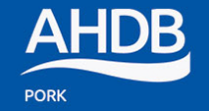Pigs which have previously been housed on straw, now in non-straw housing

What To Look For:
Be aware of previous housing systems, e.g. weaners in straw systems, or growers with a straw break. Pigs moved from straw housing to non-straw housing have a higher risk of developing tail biting and therefore need more careful management to help reduce the risks of tail biting. If all rearing stages are not on this unit check with the producer what housing system the pigs are from.
Additional information:
Be aware of the previous housing systems pigs have been reared in. Pigs moved from straw housing to non-straw housing have a higher risk of developing tail biting and, therefore, need more careful management to help reduce the risks of tail biting12. If all rearing stages are not on this unit, check with the producer what housing system the pigs are from.
Pigs which have been previously housed on straw are likely to have developed a stronger behaviour pattern of rooting and chewing; and it therefore becomes even more important that they are provided with good quality and quantity of substrates and objects to chew and root on13. When housed without substrate there is a higher risk of other pigs becoming targets of chewing (eg ear and tail biting), so it becomes even more important to provide the pigs with good quality and quantity of enrichment.
Suggestions:
Where the previous housing type is known to be straw, ensure that additional measures are present to reduce the risk of tail biting, eg additional rooting outlets such as straw racks, rooting boxes with substrate, higher numbers of attached rootable and chewable objects (eg wellies, traffic cones, sugar beet).
Key properties to sustain pigs’ interest are that objects are clean, destructible, edible and nutritional – when pigs have been previously on straw (which has all these properties when well managed), it is even more important to try and provide all these properties in objects.
See Additional material for suggestions of enrichment objects to try – there is no prescriptive list of objects, but all objects must be safe for the pigs (even when worn or damaged).
Additional material:
Environmental Enrichment for Confinement pigs -http://www.grandin.com/references/LCIhand.html
EU Staff Working Document on best practices for the prevention of routine tail-docking and the provision of enrichment materials to pigs
https://ec.europa.eu/food/sites/food/files/animals/docs/aw_practice_farm_pigs_stfwrkdoc_en.pdf
